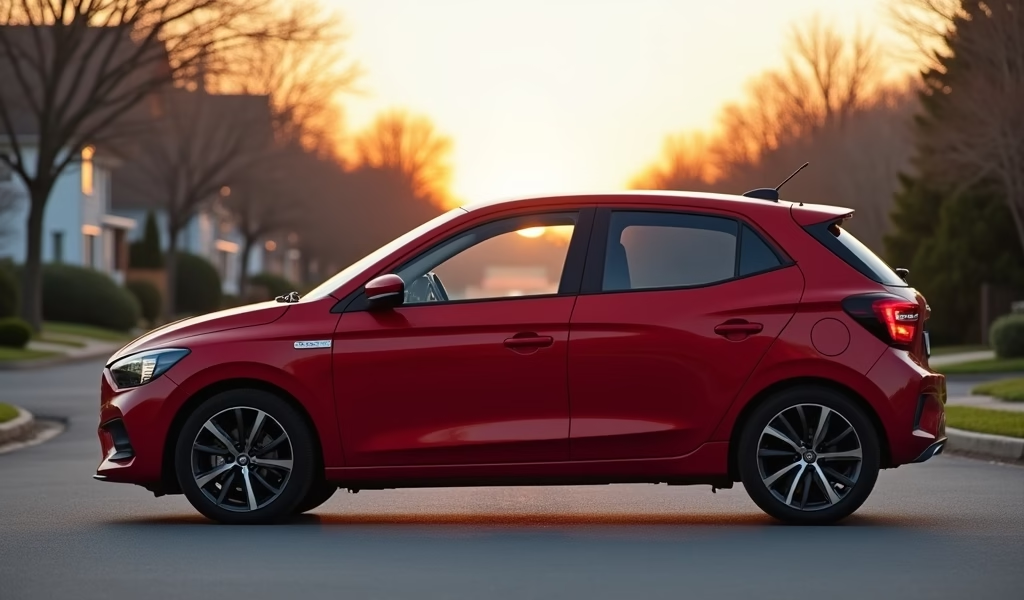Overview
This article provides five key strategies for young drivers to reduce their high insurance premiums: comparing providers, considering telematics policies, choosing insurance-friendly vehicles, adding experienced drivers to their policy, and taking advanced driving courses. These approaches help new drivers balance cost with proper coverage while building good habits that will lead to lower rates as they gain experience.
Table of Contents
- Understanding Young Driver Insurance
- Why Insurance Costs More for Young Drivers
- Tip 1: Compare Insurance Providers
- Tip 2: Consider Telematics Policies
- Tip 3: Choose the Right Car
- Tip 4: Add an Experienced Driver
- Tip 5: Take Advanced Driving Courses
- Conclusion
- Frequently Asked Questions
Understanding Young Driver Insurance
Getting behind the wheel for the first time is exhilarating, but finding affordable insurance can quickly put the brakes on that excitement. As an automotive specialist who’s guided countless young drivers through this process, I understand your frustration. The best insurance for young drivers isn’t just about finding the cheapest rate—it’s about balancing cost with proper coverage and building a foundation for your driving future.
Young drivers typically face premiums that can be two to three times higher than those for experienced drivers. This reality often comes as a shock to new licensees and their parents. However, with the right approach and information, you can find coverage that won’t empty your bank account while still protecting you properly on the road.
The insurance landscape for new drivers has evolved significantly in recent years. Insurers now offer specialized policies for new drivers that weren’t available a decade ago. These innovations have opened doors to more affordable options, particularly for those willing to embrace technology and prove their safe driving habits.
Why Insurance Costs More for Young Drivers
Before diving into our tips, it’s important to understand why young driver insurance comes with a premium price tag. Insurance companies base their rates on statistical risk, and unfortunately, the numbers don’t favor younger drivers. According to the Insurance Institute for Highway Safety, drivers aged 16-19 are nearly three times more likely to be involved in a fatal crash than drivers 20 and older.
Lack of experience plays a significant role. Even the most cautious young driver hasn’t developed the road awareness that comes with years behind the wheel. Insurers know that recognizing potential hazards, judging distances accurately, and making split-second decisions improve with experience.
Another factor is risk behavior. Studies consistently show younger drivers are more likely to engage in distracted driving, speeding, and other high-risk behaviors. Combined with inexperience, these behaviors create a perfect storm for accidents—and insurance companies price their policies accordingly.

Tip 1: Compare Insurance Providers
The difference between the highest and lowest insurance quotes for young drivers can be staggering—sometimes thousands of dollars annually for the same coverage. Never settle for the first quote you receive. Each insurer uses slightly different formulas to calculate risk, and some are simply more favorable to young drivers than others.
Use comparison websites as a starting point, but don’t rely on them exclusively. Many smaller, regional insurers that might offer competitive rates for young drivers don’t appear on these platforms. Take the time to contact companies directly, and don’t forget about insurers that sell through agents rather than online.
When comparing, look beyond the bottom-line premium. Consider deductibles, coverage limits, and available discounts. Some insurers offer substantial discounts for good students, completing driver education courses, or maintaining a clean driving record. The best car insurance for new drivers often comes from companies that reward responsible behavior with meaningful discounts.
Ask specifically about:
- Good student discounts (typically 10-15% for maintaining a B average or higher)
- Distant student discounts (if you’re away at school without a car)
- Driver training discounts
- Safe driver programs
- Multi-policy discounts (if your parents include you on their policy)
Tip 2: Consider Telematics Policies
Telematics, or usage-based insurance, has revolutionized the young driver insurance market. These policies use technology to monitor your actual driving behavior rather than relying solely on demographic statistics. For responsible young drivers, this can translate to significant savings—sometimes up to 30% off standard rates.
Most telematics programs work through a smartphone app or a small device installed in your vehicle’s diagnostic port. They track factors like:
- Acceleration and braking patterns
- Cornering speed
- Time of day you drive
- Mileage
- Phone usage while driving
The beauty of telematics is that it gives you direct control over your insurance costs. Drive safely, and your premiums will reflect that. Many programs provide feedback through their apps, helping you identify and correct risky driving habits before they lead to accidents or tickets.
Some young drivers worry about privacy concerns with telematics. While understandable, most modern programs have strong privacy protections in place. They typically don’t track your location continuously, just the driving behaviors that correlate with accident risk. For many, the potential savings outweigh these concerns.
Tip 3: Choose the Right Car
The vehicle you drive significantly impacts your insurance rates—sometimes by thousands of dollars annually. As a mechanic who’s seen the aftermath of countless accidents, I can tell you that certain vehicles are simply safer and less expensive to repair, making them much more affordable to insure.
For young drivers, I generally recommend:
- Four-door sedans or small SUVs with good safety ratings
- Vehicles with advanced safety features like automatic emergency braking
- Cars with reasonable repair costs (domestic models often have cheaper parts)
- Models with engines under 2.0 liters
- Vehicles at least 2-3 years old (to avoid the steepest depreciation)
Avoid sports cars, high-performance vehicles, and models with poor safety records. Even if you find a great deal on a sports coupe, the insurance premium will likely erase those savings many times over. The average insurance cost difference between a modest sedan and a sports car for a young driver can exceed $1,500 annually.
Before purchasing any vehicle, get insurance quotes for that specific make and model. What seems like an affordable car might come with surprisingly expensive insurance. This step alone can save you from making a costly mistake that you’ll pay for month after month.

Tip 4: Add an Experienced Driver
Adding an experienced driver with a clean record to your policy—or being added to their policy—can significantly reduce premiums. This approach, often called “named driver” or “additional driver” coverage, works because the insurance company factors in the experienced driver’s lower risk profile when calculating rates.
This strategy works best when there’s a legitimate reason for the arrangement. For example, if you live with your parents and occasionally drive their vehicle in addition to your own, adding them to your policy (or vice versa) makes perfect sense. Insurance companies understand these arrangements and price policies accordingly.
However, a word of caution: never falsely claim that an older driver is the main user of your vehicle when they’re not. This practice, known as “fronting,” is considered insurance fraud and can lead to denied claims and even policy cancellation. Be honest about who primarily drives the vehicle.
For young drivers living at home, being added to parents’ existing policies often provides the most affordable coverage. Many cheap car insurance options for new drivers involve this arrangement, with some insurers offering specific family or multi-car discounts that further reduce premiums.
Tip 5: Take Advanced Driving Courses
Completing an advanced driving course demonstrates to insurers that you’re committed to safe driving. Many insurance companies reward this commitment with discounts of 5-15% on premiums. These courses go beyond basic driver’s education, focusing on defensive driving techniques and hazard perception.
Look for courses specifically recognized by insurance providers. In the U.S., these might include:
- The National Safety Council’s Defensive Driving Course
- AAA Driver Improvement Programs
- Advanced driver training from recognized driving schools
Beyond the immediate insurance discount, these courses provide valuable skills that can help prevent accidents. As someone who’s repaired countless vehicles after preventable crashes, I can attest to the value of proper training. The techniques you’ll learn—proper following distance, scanning for hazards, managing distractions—create habits that can save lives and prevent injuries.
Some insurance companies also offer their own safe driving programs, either online or in-person. These programs are specifically designed to address the risk factors most common among young drivers and may provide more substantial discounts than third-party courses.
Conclusion
Finding the best insurance for young drivers requires patience, research, and a willingness to prove yourself as a safe driver. While you can’t change your age or experience level overnight, the five strategies we’ve discussed can help you secure more affordable coverage without sacrificing protection.
Remember that your insurance history follows you throughout your driving life. Establishing good habits early—both in driving and in maintaining continuous insurance coverage—will pay dividends for decades. As you gain experience and demonstrate responsible behavior, your premiums will gradually decrease.
The road to affordable insurance may seem long, but each year of safe driving brings you closer to standard rates. In the meantime, regularly revisit your coverage options. Insurance markets change constantly, and a company that wasn’t competitive when you first got your license might offer the best rates a year later.
Frequently Asked Questions
What age do car insurance rates go down?
Insurance rates typically begin decreasing at age 25, assuming a clean driving record. You’ll see gradual decreases through your twenties with significant drops once you reach 30.
Can I stay on my parents’ insurance if I move out?
It depends on your insurer’s specific policies and your state’s regulations. Generally, you need to live at your parents’ address at least part-time to remain on their policy.
Do I need full coverage on my first car?
If your vehicle is financed or leased, full coverage is required. For paid-off older vehicles, liability-only coverage might be sufficient, though comprehensive and collision provide valuable protection.
How much can a good student discount save?
Good student discounts typically range from 10-25% of your premium. Most insurers require at least a B average (3.0 GPA) to qualify.
Will taking a defensive driving course lower my insurance?
Yes, completing an approved defensive driving course can reduce premiums by 5-15%. Check with your insurer before enrolling to ensure the course qualifies for their discount program.


Pingback: Best Auto Insurance for Young Drivers! - knowsyourcar.com